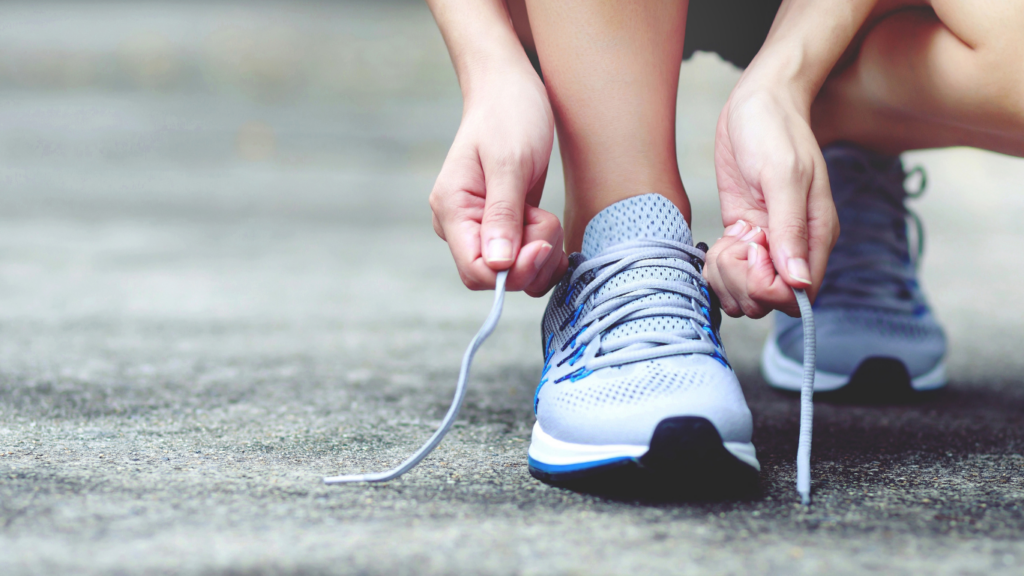Are you looking to step up your running game but unsure about the right shoes for your feet? Finding the perfect pair of running shoes tailored to your foot type can make a world of difference in your performance and comfort. As a seasoned runner, I understand the importance of selecting the right footwear to support your unique gait and structure.
In this comprehensive guide, I’ll walk you through the essential factors to consider when purchasing running shoes based on your foot type. Whether you have flat feet, high arches, or neutral pronation, I’ll share valuable insights to help you make an informed decision.
With the right shoes, you can prevent injuries, enhance your running experience, and reach your fitness goals with confidence.
Understanding Your Foot Type
When it comes to buying the right running shoes, understanding your foot type is crucial. As a runner myself, I know how important it is to match your shoes to your foot structure to avoid discomfort and potential injuries.
Here, I’ll delve into the three main foot types flat feet, high arches, and neutral pronation to help you identify which category your feet fall under. Let’s explore how each foot type impacts your running gait and the type of shoe support you need.
Importance of Proper Running Shoes
Running shoes play a crucial role in supporting your feet and enhancing your running performance. As a runner, I understand the significance of wearing the right shoes that cater to my specific foot type.
Choosing appropriate running shoes can make a significant difference in preventing injuries and ensuring a comfortable running experience. Selecting running shoes tailored to your foot type is essential as it provides the necessary support and stability.
Whether you have flat feet, high arches, or neutral pronation, wearing shoes designed for your specific foot structure can help correct biomechanical imbalances and reduce the risk of discomfort or injury while running.
Understanding your foot type is the first step in finding the perfect running shoes. Each foot type flat feet, high arches, and neutral pronation requires different levels of cushioning, support, and stability in a shoe to optimize your running gait and overall performance.
By investing in the right running shoes, you can improve your efficiency and minimize the impact on your feet and legs during each run.
Choosing the Right Running Shoes
When it comes to selecting the right running shoes, it’s essential to consider factors like your foot arch, pronation, and seeking advice from a professional. By understanding these elements, you can make an informed decision that enhances your running experience while reducing the risk of discomfort or injuries.
Assessing Your Foot Arch
Understanding your foot arch is crucial in determining the type of support your feet need. Whether you have flat feet, high arches, or neutral arches, each foot type requires specific features in running shoes to provide optimal comfort and performance.
Considering Pronation
Pronation refers to how your foot rolls inward when you walk or run. It’s essential to know your pronation type overpronation, underpronation, or neutral pronation—to choose running shoes that offer the right level of stability and cushioning for your gait.
Consulting with a Professional
Seeking advice from a professional, such as a podiatrist or running shoe specialist, can provide valuable insights into your foot type and gait mechanics. They can conduct gait analysis to recommend the most suitable running shoes tailored to your specific needs, ensuring a comfortable and injury-free running experience.
Testing and Adjusting
To ensure that the running shoes you choose are the perfect fit for your foot type, it’s crucial to undergo testing and make necessary adjustments for optimal performance and comfort. Here’s how you can effectively test and adjust your running shoes:
- Testing on Different Surfaces: When trying out your new running shoes, it’s advisable to test them on various surfaces that you typically run on. This includes road surfaces, tracks, trails, and any other terrain you frequent. Testing on different surfaces allows you to gauge the shoe’s performance and comfort levels across diverse environments, ensuring they meet your requirements irrespective of the running conditions.
- Assessing Comfort and Fit: Pay close attention to how the shoes feel on your feet while running. Check for any discomfort, rubbing, or pressure points that may indicate an improper fit. Ensure there’s adequate toe room and that the shoe securely supports your arch and heel. It’s essential that the shoes provide a snug yet comfortable fit to prevent blisters, chafing, or injuries during your runs.
- Observing Running Mechanics: Observe your running mechanics and gait while wearing the new shoes. Note any changes in your stride, foot alignment, or overall comfort compared to your previous footwear. By assessing how the shoes impact your running form, you can make adjustments to address any issues that may arise, such as overpronation or supination.
- Gradual Break-in Period: Allow for a gradual break-in period when testing new running shoes. Start with shorter runs to acclimate your feet to the shoes and gradually increase the mileage as you become accustomed to them. It’s normal for new shoes to feel slightly different initially, but over time, they should mold to your feet for a more personalized fit and enhanced comfort.
- Making Necessary Adjustments: If you experience persistent discomfort or notice issues with the shoe fit or performance, consider making necessary adjustments. This may include changing the lacing technique, adding supportive insoles, or exploring different shoe models that better cater to your specific foot type and running style. Don’t hesitate to experiment with adjustments until you find the optimal configuration that enhances your running experience.


 Jameserlic Fitch played a crucial role in building the technical foundation of Toe Back Fitness, leveraging his skills to enhance the site’s functionality and user experience. His work focused on creating a seamless, responsive design that ensures visitors can easily navigate content and access the resources they need. Fitch’s behind-the-scenes efforts have been vital in ensuring the platform operates smoothly, offering a reliable and engaging experience for fitness enthusiasts at every level.
Jameserlic Fitch played a crucial role in building the technical foundation of Toe Back Fitness, leveraging his skills to enhance the site’s functionality and user experience. His work focused on creating a seamless, responsive design that ensures visitors can easily navigate content and access the resources they need. Fitch’s behind-the-scenes efforts have been vital in ensuring the platform operates smoothly, offering a reliable and engaging experience for fitness enthusiasts at every level.